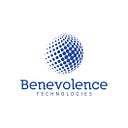Light DAM vs. Full DAM: What’s the Difference? Part-1
There is an exponential demand for content in today’s digital world, especially rich media assets such as images and video. These assets are no longer just the purview of the marketing organizations either their use is spreading across the organization internally and externally by helping to deliver a richer and more personalized customer experience.
Understandably, the digital asset management (DAM) space has always been a bit confusing. With so many DAM solutions available, the lines that separate the different types of solutions there have become blurred. And, along with the number of DAM solutions available, the introduction of “light DAMs” has caused even more confusion. What is Lite DAM and how does it differ from a traditional DAM solution? In this post, we’ll discuss the difference between the two and how to choose which one is best for your organization.
What is a light dam?
A Lite DAM is essentially a digital asset library within another SaaS solution such as a CMS, Work OS, etc. Typically, they have lightweight functionality and are used with the understanding that the assets are mostly used in the parent or hosting solution.
Salient Features of Light Dam
1. Asset Previews: Basic previews of your assets are available, usually for photos and videos only.
2. Share Links: Share links can be created for individual assets for easy sharing from within the solution.
3. Basic Search: Users can search for assets with file names, descriptions, and (sometimes) other basic metadata.
Bottom line
For companies with light digital asset needs and a small library, the capabilities of a light DAM just fit the bill. Small organizations that need to access assets from a central library can benefit from using a lightweight DAM if they can easily find and share them and don’t need the sophisticated and robust functionality that a full DAM solution provides.
What is a full dam?
Complete DAM solutions are designed specifically to store, manage and distribute your digital assets. They offer excellent functionality that allows users to manage many types of digital files and perform a variety of useful tasks such as re-sizing and re-formatting media, tracking usage history, and sharing large files with ease. With features like branded portals and permission-based user settings, DAM ensures that only the right people have access to the assets they need to protect your library and ensure maximum security.
Key Features of a Complete DAM
1. Easy Sharing: DAM includes multiple features such as web galleries, portals, and distribution links that allow easy sharing of large media files such as high-resolution images, large-format videos, etc.
2. Asset security: DAM provides version control, history tracking, and watermarking, as well as improved security and compliance to ensure full control over digital assets for internal and external users.
3. File Discoverability: A DAM makes it easy to store, manage and find brand and marketing material with artificial intelligence, keywords, and advanced search capabilities.
Bottom line
A complete DAM solution is ideal for companies that need a streamlined way to produce, store and distribute large amounts of rich media content (photos, videos, audio, and more). Companies with a growing library of media assets or distributed teams need more complete solutions and long-term strategies for their ever-growing digital asset management needs.
